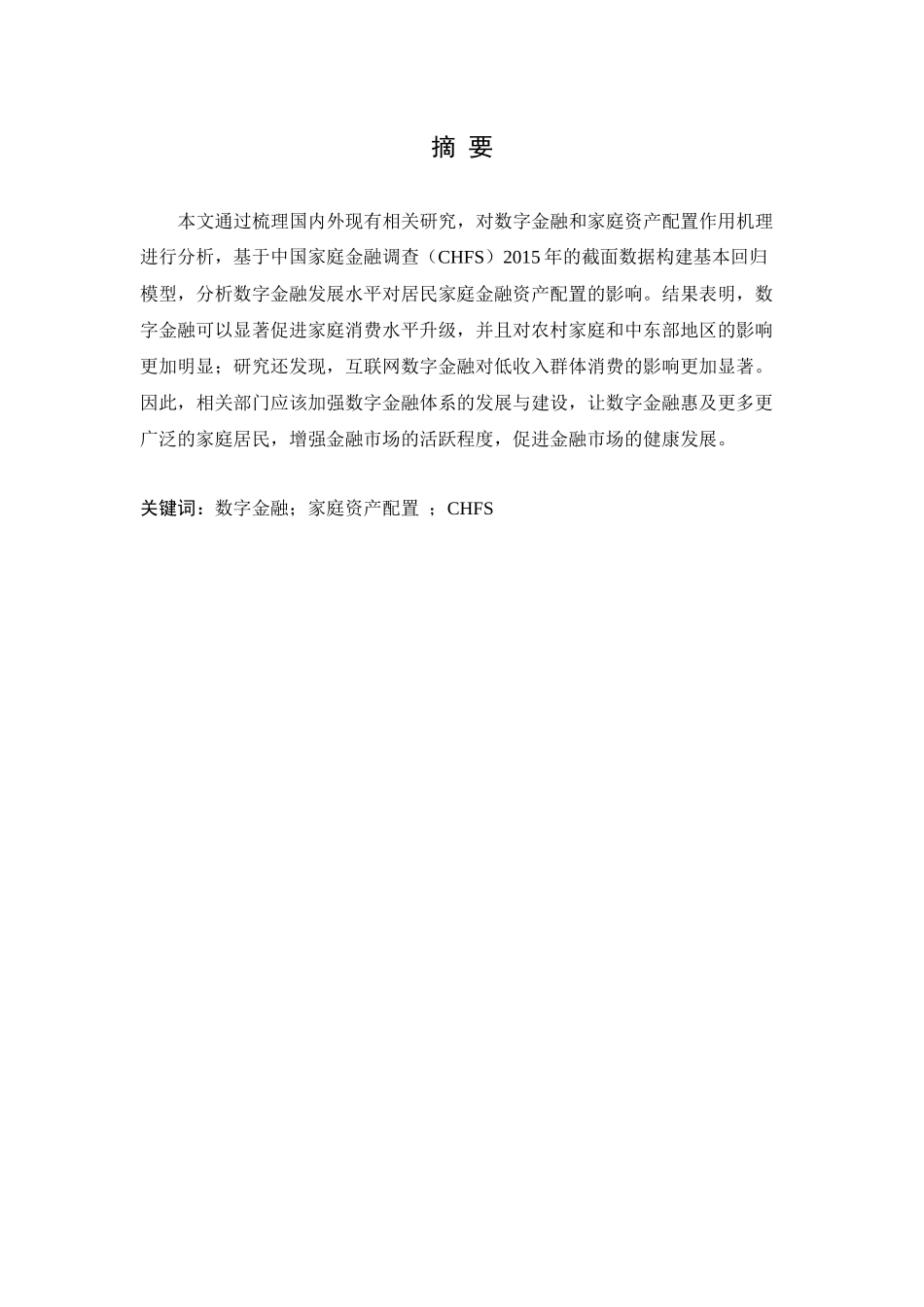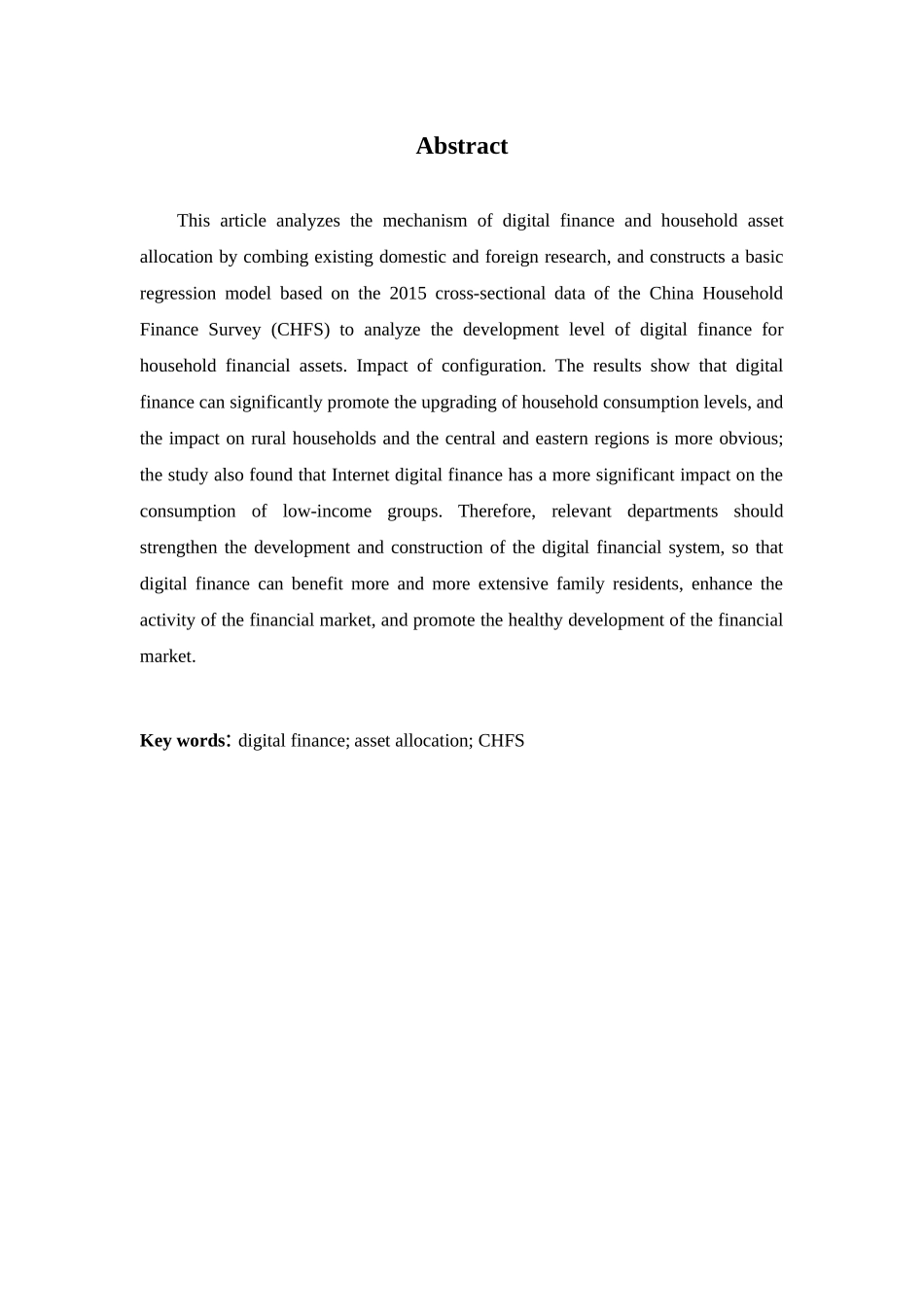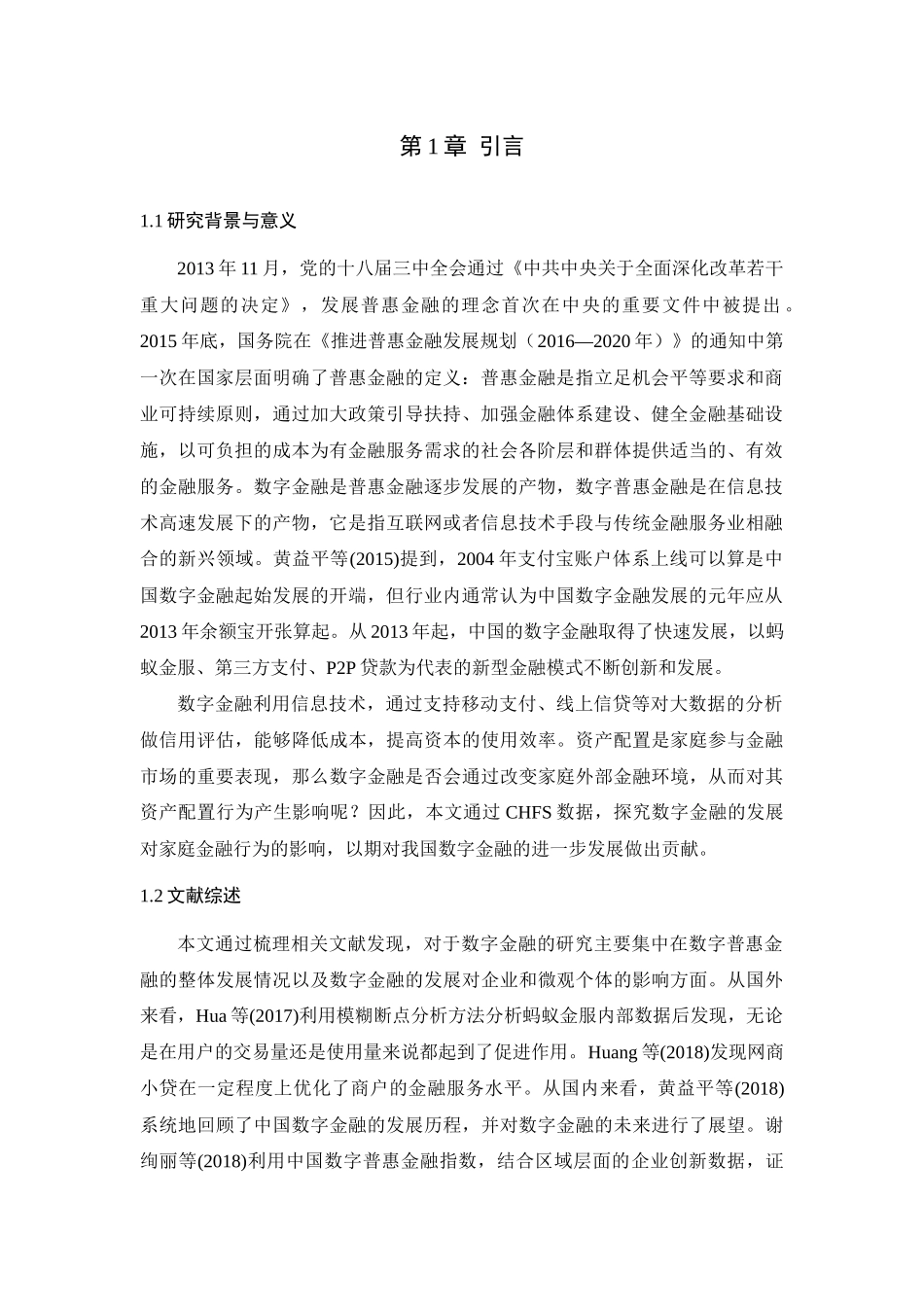摘 要本文通过梳理国内外现有相关研究,对数字金融和家庭资产配置作用机理进行分析,基于中国家庭金融调查(CHFS)2015 年的截面数据构建基本回归模型,分析数字金融发展水平对居民家庭金融资产配置的影响。结果表明,数字金融可以显著促进家庭消费水平升级,并且对农村家庭和中东部地区的影响更加明显;研究还发现,互联网数字金融对低收入群体消费的影响更加显著。因此,相关部门应该加强数字金融体系的发展与建设,让数字金融惠及更多更广泛的家庭居民,增强金融市场的活跃程度,促进金融市场的健康发展。关键词:数字金融;家庭资产配置 ;CHFSAbstractThis article analyzes the mechanism of digital finance and household asset allocation by combing existing domestic and foreign research, and constructs a basic regression model based on the 2015 cross-sectional data of the China Household Finance Survey (CHFS) to analyze the development level of digital finance for household financial assets. Impact of configuration. The results show that digital finance can significantly promote the upgrading of household consumption levels, and the impact on rural households and the central and eastern regions is more obvious; the study also found that Internet digital finance has a more significant impact on the consumption of low-income groups. Therefore, relevant departments should strengthen the development and construction of the digital financial system, so that digital finance can benefit more and more extensive family residents, enhance the activity of the financial market, and promote the healthy development of the financial market.Key words: digital finance; asset allocation; CHFS第 1 章 引言1.1 研究背景与意义2013 年 11 月,党的十八届三中全会通过《中共中央关于全面深化改革若干重大问题的决定》,发展普惠金融的理念首次在中央的重要文件中被提出 。2015 年底,国务院在《推进普惠金融发展规划(2016—2020 年)》的通知中第一次在国家层面明确了普惠金融的定义:普惠金...












